Carpet cleaning is an essential part of maintaining a clean and healthy home environment. With various methods available, it can be challenging to determine the best approach for your carpets. From hot water extraction to dry cleaning, each technique has its own benefits and drawbacks. Factors such as the type of carpet, level of soiling, drying time, cost, and environmental impact should be considered when choosing the right method.
Professional carpet cleaning offers deep cleaning, and stain removal, and improves indoor air quality, ultimately prolonging the life of your carpets.
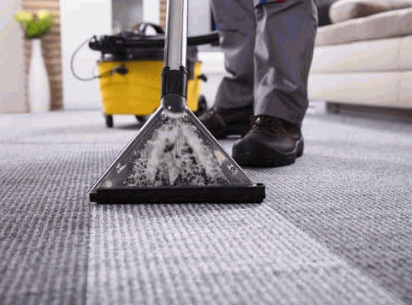
What Is Carpet Cleaning?
Carpet cleaning involves the removal of dirt, stains, and allergens from carpets to maintain their appearance and prolong their lifespan.
- Regular professional cleaning services are essential to ensure deep cleaning and remove embedded dirt and grime that regular vacuuming may not address.
- Steam cleaning, also known as hot water extraction, is a popular method that effectively cleans carpets by using hot water and eco-friendly cleaning solutions.
- Dry cleaning, on the other hand, is ideal for carpets that cannot withstand moisture.
Different types of carpet fibers such as wool, synthetic, or natural fibers require specific care to prevent damage during cleaning. Proper maintenance not only ensures a clean and fresh look but also extends the life of the carpet, making it a worthwhile investment.
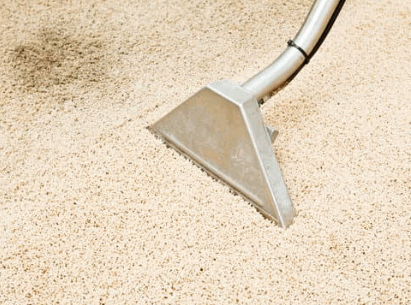
Why Is It Important To Clean Carpets?
Regular carpet cleaning is essential to preserve the appearance, integrity, and hygiene of carpets, especially in high-traffic areas.
- High-traffic areas can quickly accumulate dirt, debris, and stains, leading to a dull and unhygienic carpet surface. Regular cleaning not only enhances the visual appeal of carpets but also extends their lifespan by preventing wear and tear caused by trapped particles.
- Maintaining clean carpets is crucial for ensuring a healthy indoor environment, as dirt and allergens can get trapped within the carpet fibers, contributing to poor air quality. Proper cleaning methods help in removing stubborn stains and odors, creating a fresh and inviting space for inhabitants and visitors alike.
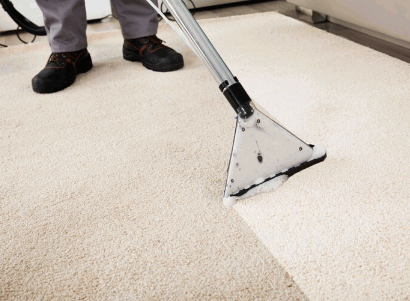
What Are The Different Carpet Cleaning Methods?
Various carpet cleaning methods are employed, ranging from hot water extraction to dry cleaning, each with unique processes and efficacy.
Hot water extraction, also known as steam cleaning, involves injecting hot water and cleaning solution into the carpet fibers and then extracting it along with dirt and stains. This method is highly effective in deep cleaning and sanitizing carpets, making it a popular choice for households with pets or allergies.
On the other hand, dry cleaning utilizes chemical solvents to clean carpets without excess moisture, making it a quicker option for surface-level cleaning. It may not penetrate deep into the fibers.
Steam cleaning, which uses hot water vapor, is another effective method, particularly for removing tough stains and odors, but it requires longer drying times compared to dry cleaning.
Take a look: How To Clean A Carpet Rug
Hot Water Extraction
Hot water extraction, also known as steam cleaning, is a popular method that involves the use of hot water and cleaning solutions to penetrate carpet fibers deeply.
- The process begins with the application of a pre-treatment solution that breaks down dirt and stains embedded in the carpet fibers.
- Once the solution has had time to dwell, a high-pressure hot water extraction tool is used to inject a mixture of hot water and cleaning solution deep into the carpet pile.
- This powerful combination helps to dislodge dirt, debris, and allergens from the carpet, which are then extracted using a powerful vacuum system.
The technology used in hot water extraction ensures that a thorough and effective cleaning process is achieved, leaving your carpets looking fresh and revitalized.
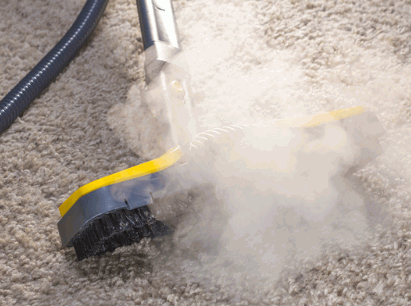
Dry Cleaning
Dry cleaning is a method that uses minimal moisture and specialized cleaning agents to clean carpets without saturating the fibers.
By utilizing this process, dry cleaning ensures a thorough cleaning of carpets without leaving behind any excessive moisture, which can lead to mold and mildew growth. Many people believe that dry cleaning is not as effective as traditional wet methods, but in reality, dry cleaning can effectively remove deep-seated dirt and stains while being gentle on the carpet fibers. Dry cleaning is a safer option for individuals with allergies or sensitivities to harsh chemicals often used in traditional carpet cleaning. This method is eco-friendly as well, as it conserves water and reduces the environmental impact associated with excessive water usage.

Shampooing
Shampooing is a carpet cleaning method that involves the application of a cleaning solution to the carpet surface, followed by scrubbing and extraction.
This method can be effective in removing deep-seated dirt and stains from carpets, rejuvenating their appearance. Shampooing also helps in deodorizing carpets, leaving them smelling fresh.
One major drawback of shampooing is that it can leave behind residue if not rinsed thoroughly, leading to rapid re-soiling. The process can be time-consuming as it requires drying time post-cleaning. Specialized carpet cleaning machines are often needed for shampooing, adding to the overall cost and complexity of the process.
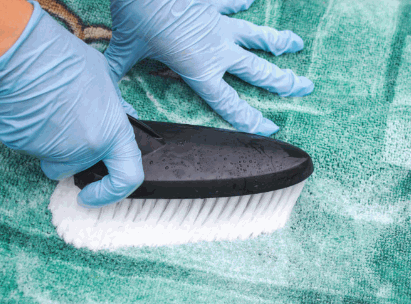
Bonnet Cleaning
Bonnet cleaning involves the use of a rotating absorbent pad to agitate the carpet fibers and absorb soil and stains from the surface.
This method is particularly effective in removing surface-level dirt and stains without causing damage to the carpet fibers. The absorbent pad collects the loosened dirt and grime, leaving the carpet looking refreshed and rejuvenated.
Many professional cleaning companies recommend incorporating bonnet cleaning into regular carpet maintenance routines to keep carpets looking their best. The frequency of bonnet cleaning can vary depending on factors such as foot traffic and the susceptibility of the carpet to stains.
Cleaning chemicals used in bonnet cleaning are typically mild detergents or encapsulation solutions that are safe for use on most carpet types.
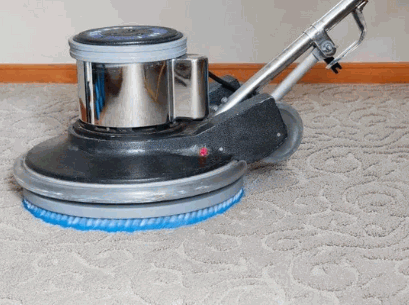
Encapsulation
Encapsulation is a modern carpet cleaning technique that involves the application of a specialized cleaning agent that encapsulates dirt particles for easy removal.
This method is becoming increasingly popular due to its numerous benefits. The first step in the encapsulation process is to apply the cleaning solution onto the carpet, where it binds and encloses the dirt and soil particles. As the solution dries, it forms crystals that encapsulate the dirt, making it easy to extract during the subsequent vacuuming.
One of the key advantages of encapsulation is that it requires less water compared to traditional methods, which reduces drying time and minimizes the risk of mold or mildew growth. Innovations in encapsulation technology have led to improved cleaning agents that are more effective in capturing and removing dirt, resulting in cleaner carpets and a healthier indoor environment.
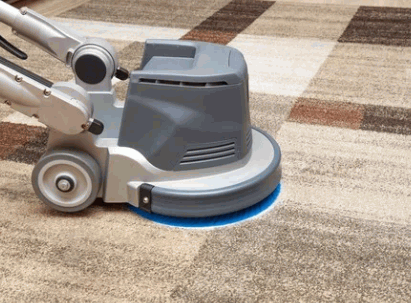
Steam Cleaning
Steam cleaning utilizes high-temperature steam to sanitize and clean carpets thoroughly, making it a preferred method for removing tough stains and eliminating pet odors.
This method not only provides a deep clean but also offers a significant return on investment for carpet maintenance. By effectively tackling pet odors, which can be persistent and challenging to eliminate, steam cleaning ensures a fresh and odor-free environment. Adhering to industry standards for cleanliness, steam cleaning plays a crucial role in maintaining high-quality carpet hygiene. Its ability to penetrate deep into carpet fibers and remove hidden dirt and allergens makes it an essential practice for ensuring a healthy living space.
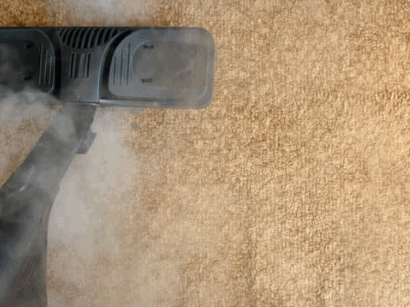
Which Carpet Cleaning Method Is The Best?
Determining the best carpet cleaning method depends on various factors such as carpet type, level of soiling, and desired drying time.
- Different carpet cleaning methods like steam cleaning, dry cleaning, and hot water extraction offer distinct advantages based on specific cleaning needs.
- Industry associations often recommend steam cleaning for deep cleaning heavily soiled carpets, while dry cleaning may be preferred for delicate carpet materials.
- The efficacy of each method is influenced by factors such as water temperature, cleaning solutions used, and equipment efficiency.
It is essential to align these factors with carpet cleaning standards to ensure thorough and satisfactory results.
What Are The Factors To Consider?
When selecting a carpet cleaning method, it is essential to consider factors such as time efficiency, the pros and cons of each method, the latest industry trends, and the certifications of cleaning professionals.
Efficiency in time can greatly impact the choice of cleaning method. The industry is witnessing a shift towards faster, more eco-friendly techniques. For instance, steam cleaning, which uses hot water extraction, is gaining popularity due to its ability to deep clean while being environmentally conscious. This method may take longer to dry compared to dry cleaning methods.
Understanding industry standards and certifications can help homeowners make informed decisions. It is essential to balance fast cleaning with thoroughness for optimal results.
Type Of Carpet
The type of carpet, including its material and construction, influences the choice of cleaning method and the specific techniques employed in the cleaning process.
For instance, carpets made from natural fibers like wool or silk are delicate and require gentle cleaning methods to avoid damage. On the other hand, synthetic fibers such as nylon or polyester are more resilient and can withstand heavier cleaning procedures.
Recent advancements in the carpet cleaning industry have introduced innovative techniques like eco-friendly solutions and steam cleaning, which are tailored to cater to the specific needs of different carpet materials. Choosing the right cleaning method not only ensures a thorough cleaning but also prolongs the life and appearance of the carpet.
Level Of Soiling
The degree of soiling, especially in high-traffic areas, determines the intensity of cleaning solutions and tools needed to effectively clean the carpet.
In busy spaces like hallways, living rooms, and entryways, where foot traffic is constant, dirt and grime can quickly build up, posing a challenge for maintaining carpet cleanliness. The selection of cleaning solutions in such areas is crucial to ensure the efficient removal of deep-seated stains and dirt particles. Contrary to popular belief, excessive soiling does not always require aggressive scrubbing or harsh chemicals; instead, choosing the right cleaning method can effectively address even the toughest stains while preserving the carpet’s texture and color integrity.
Drying Time
The drying time required after carpet cleaning varies based on the method used, the expertise of cleaning service providers, the type of cleaning chemicals applied, and the overall cleaning process.
Considering the drying time as a critical factor in selecting a carpet cleaning method is essential for ensuring the longevity and cleanliness of your carpets.
Professional service providers play a crucial role in determining the efficiency of the drying process, as their expertise can impact the thoroughness of the cleaning job.
The choice of cleaning chemicals can significantly affect the drying duration, with some products promoting quicker drying times than others.
Understanding how these factors interplay during the cleaning process can help in achieving quicker and more effective drying results for your carpets.
Cost
The cost of carpet cleaning services is influenced by factors such as the method chosen, the benefits obtained, safety considerations, and the complexity of the cleaning steps involved.
When it comes to deciding on the most suitable carpet cleaning method, individuals often weigh the benefits against the expenses incurred. Safety is a crucial aspect when selecting a cleaning method, as some techniques may involve harsh chemicals or processes that could pose health risks. To ensure a safe and efficient cleaning process, it is important to follow recommended guidelines for each method, use appropriate protective gear, and conduct a thorough inspection of the area to address any potential hazards before starting the cleaning process.
Environmental Impact
Considering the environmental impact of carpet cleaning methods is crucial in aligning with eco-friendly trends, assessing the efficacy of cleaning processes, and weighing the pros and cons of each method.
By focusing on eco-friendly solutions, the carpet cleaning industry can significantly reduce its carbon footprint and contribute to a healthier environment. The use of biodegradable and non-toxic cleaning products not only minimizes harm to ecosystems but also enhances indoor air quality. Challenges such as higher costs associated with sustainable practices and the need for specialized equipment can pose obstacles for businesses. Balancing these factors while striving for environmental sustainability remains a key consideration for industry professionals.
What Are The Benefits Of Professional Carpet Cleaning?
Professional carpet cleaning offers numerous benefits, including in-depth cleaning, access to specialized tools, and expertise from trained professionals.
These services go beyond surface cleaning to remove embedded dirt, allergens, and bacteria that can accumulate over time. With the use of advanced tools and techniques, such as hot water extraction or steam cleaning, professionals can achieve a level of cleanliness that is hard to replicate with regular vacuuming. Their training and experience ensure that carpets are treated with the right cleaning agents and methods, preventing damage and promoting longevity. By investing in professional carpet cleaning, you can not only enjoy a cleaner and healthier environment but also extend the life of your carpets.
Deep Cleaning
Deep cleaning by professionals ensures the removal of embedded dirt, stains, and allergens, enhancing the overall efficacy of the cleaning process and promoting a healthier indoor environment.
This thorough cleaning method not only rejuvenates the appearance of carpets but also plays a vital role in maintaining indoor air quality.
By targeting deep-seated contaminants that regular vacuuming may miss, professional deep cleaning eradicates bacteria and allergens, reducing health risks associated with poor indoor air quality.
Techniques such as hot water extraction and steam cleaning penetrate deep into carpet fibers, loosening dirt and tough stains for a more thorough cleanse.
This level of cleanliness not only enhances the longevity of carpets but also contributes to a fresher, safer indoor environment.
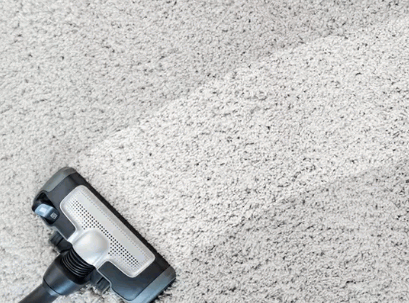
Removal Of Tough Stains
Professional carpet cleaning services excel in tackling tough stains using specialized products and techniques designed to address common challenges and dispel cleaning myths.
Their expertise lies in utilizing powerful stain removers like enzymatic cleaners, oxygen bleach, and solvent-based solutions to break down and lift stubborn stains effectively. These professionals are well-versed in the art of pre-treating different types of stains, ranging from red wine spills to pet accidents, with precision and care. By understanding the fiber content of the carpet and the nature of the stain, they can choose the most suitable cleaning method to ensure thorough removal without damaging the carpet’s texture or color.
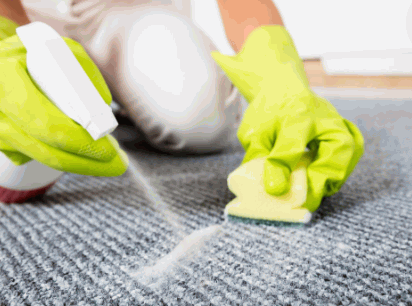
Prolongs The Life Of Your Carpet
Regular professional cleaning enhances the longevity of carpets by minimizing wear and tear, necessitating less frequent cleaning, optimizing time efficiency, and utilizing specialized tools for effective maintenance.
By implementing proper maintenance practices such as regular vacuuming and spot cleaning, professional cleaners can help prevent dirt and debris from embedding deeply into the carpet fibers, which is a common cause of premature wear.
Their expertise enables them to address stains and spills promptly, reducing the likelihood of permanent damage and the need for extensive cleaning sessions. This proactive approach not only saves time but also ensures that the cleaning process is thorough and tailored to the specific needs of the carpet material, maximizing its lifespan.
Improves Indoor Air Quality
Professional carpet cleaning plays a vital role in improving indoor air quality by eliminating pet odors, enhancing safety standards, and comparing different cleaning methods for their air quality impact.
Pet odors can often linger in carpets, upholstery, and rugs, negatively affecting the overall air quality within a home or office space. By utilizing professional cleaning services, these odors can be effectively removed, creating a fresher and healthier environment.
Safety is a crucial aspect during the cleaning process, and professional cleaners are equipped with the necessary knowledge and tools to ensure that the cleaning methods used are safe for both the occupants and the environment.
When comparing various cleaning methods, such as steam cleaning, dry cleaning, and eco-friendly options, it is essential to evaluate their effectiveness in not only removing dirt and stains but also in eliminating allergens and pollutants that impact indoor air quality.
Saves Time And Effort
Engaging professional carpet cleaning services saves time and effort for homeowners, providing convenience, superior results, expert care, and ongoing maintenance advice.
By entrusting experts with the task of cleaning your carpets, you not only free up your valuable time but also ensure that the job is done with precision and thoroughness. Professional carpet cleaners have the knowledge, skills, and specialized equipment to tackle even the toughest stains and deeply embedded dirt, resulting in carpets that look and feel refreshed. The ongoing maintenance advice offered by professionals can help prolong the lifespan of your carpets, saving you money in the long run by reducing the need for frequent replacements.
